Affiliate links on Android Authority may earn us a commission. Learn more.
Asana vs Monday.com: Which is a better work management platform?
Published onApril 3, 2023
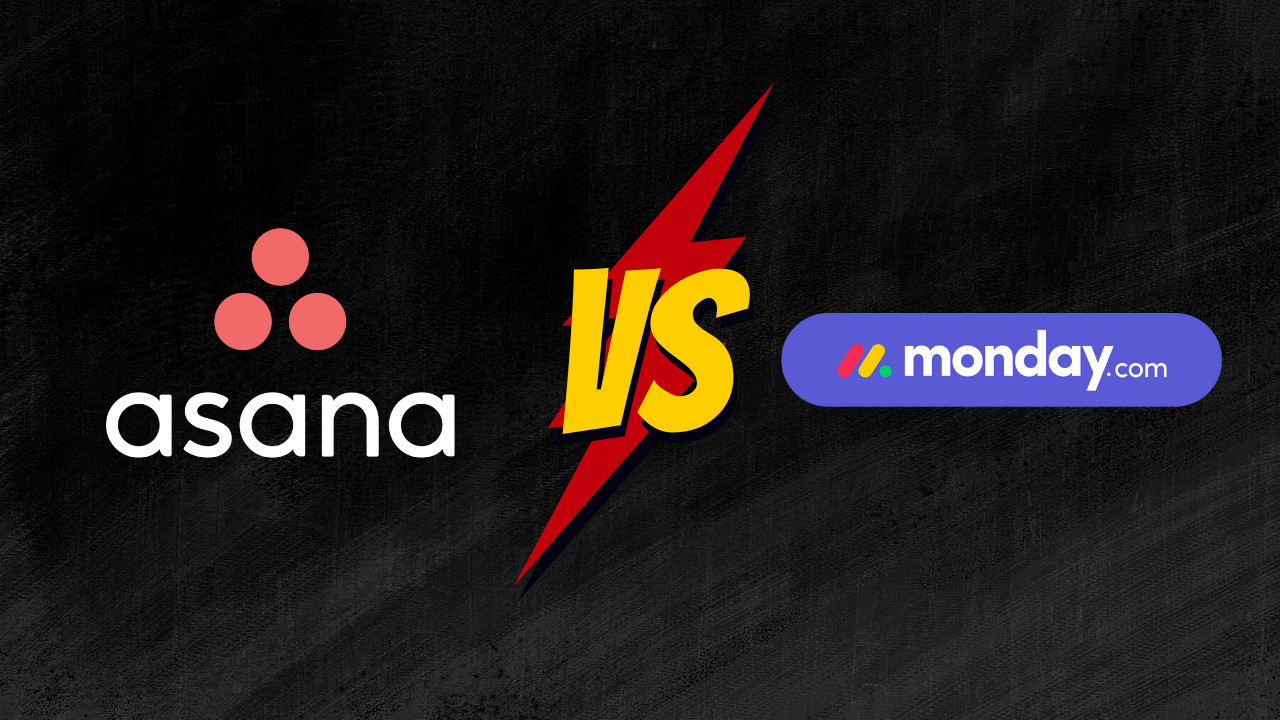
In this age of remote and hybrid working, it is more important than ever to have a robust work management platform for your team. Platforms like Asana and Monday.com let you get deep into project management and task management for your organization, letting everyone and their managers know what stage of work everyone is at. Work management is so crucial to planning, scheduling, decision-making, and more that you just cannot compromise on it. If you’re at a point where you need to get started with a work management platform, you may be wondering what is better, Asana or Monday.com? We hope to explain the differences between the two, so you can decide what works better for your business and needs.
Asana vs Monday: How do they stack up?
Both Asana and Monday.com are SaaS (Software as a Service) products with a focus on team-based project management. To that extent, they are similar. But they start diverging in what they can do beyond that.
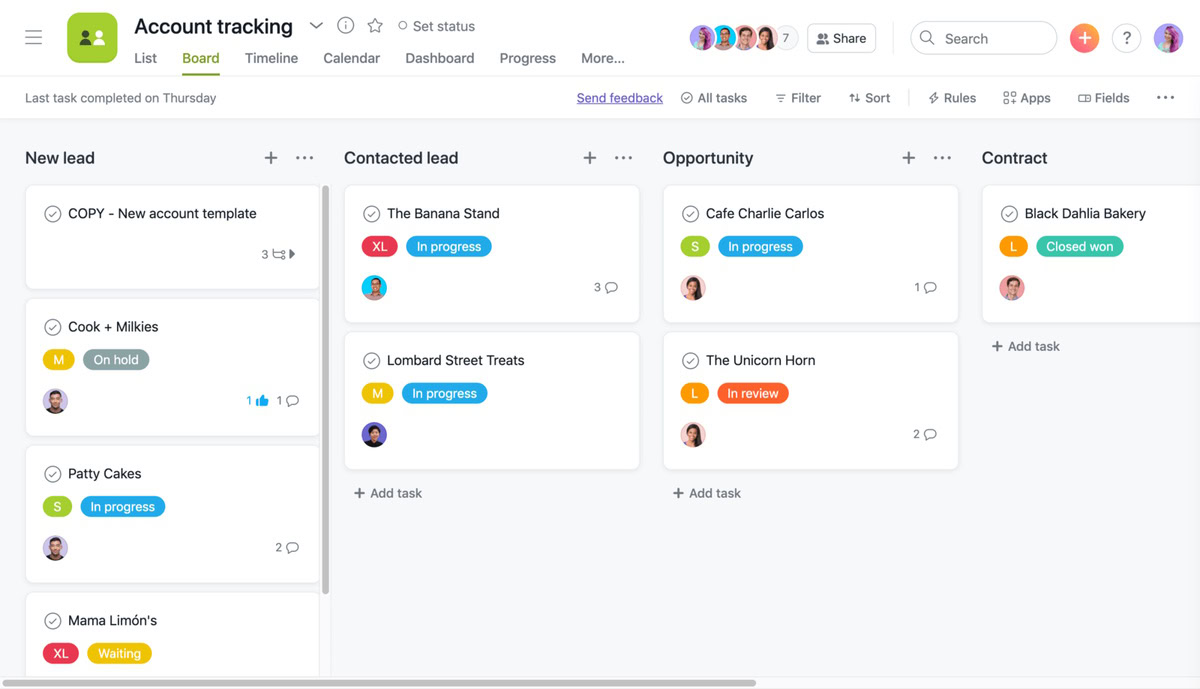
Asana focuses deeper on collaborative tasks and project management, while Monday goes wider with the management of other aspects of your business as well.
While Asana features numerous integrations with other productivity apps and services that your business would be using, Monday features an entire platform within itself that you can use to build custom apps and workflows. Monday thus positions itself as a “work OS” as it integrates all the necessary bits required for your business, including invoicing and HR functions.
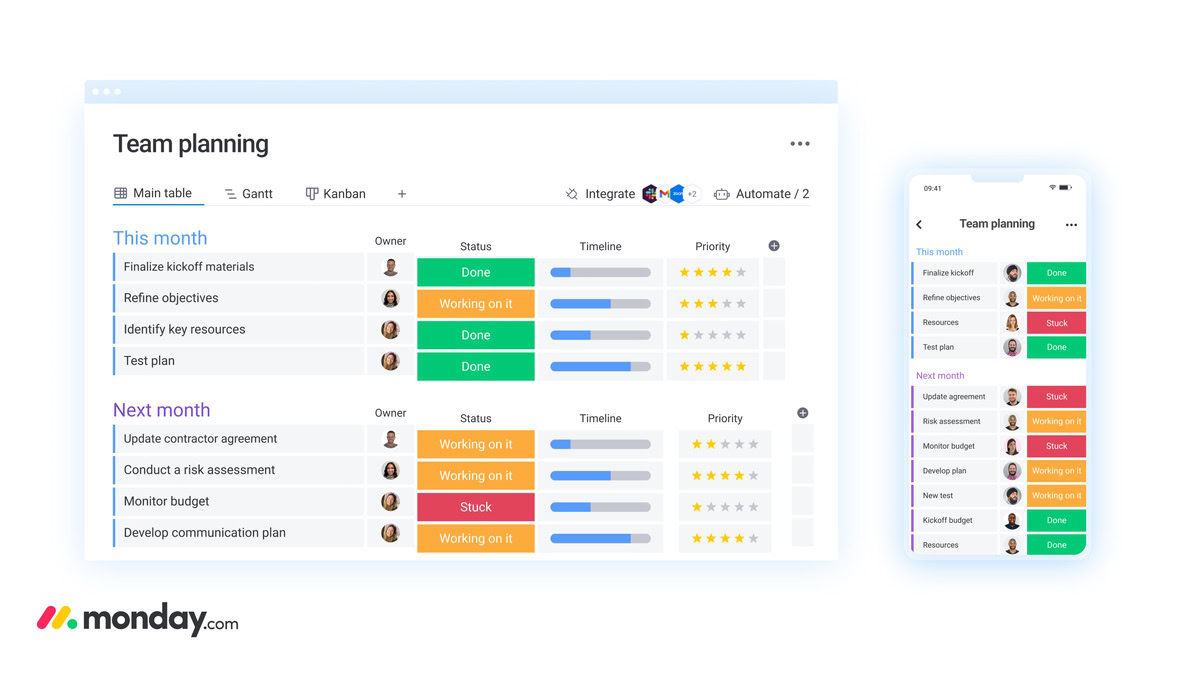
Both Asana and Monday are work and project management tools. To explain it in more basic terms, these services help you keep track of who is responsible for what tasks, what is their progress, when is the due date, and many more activities around this central premise.
The idea may seem simple, but it gets increasingly complex when you have many team members spread across time zones, doing different types of tasks in different types of roles, and so on. Asana and Monday’s primary selling point is that they help facilitate all of this so that your business can function in the way it needs to.
Asana vs Monday.com: Pricing and Features
We’ll start with pricing first since that is going to be one of the top considerations for businesses. Both the services have tiers of subscriptions, and what tier you choose to pay for also determines the set of features you will have access to.
Asana has four tiers, while Monday has five tiers. However, Monday’s starting tier is free but limited to two seats only, making it fit only for individuals to manage their workflow. As a business or collaborative organization, you will definitely be needing more than two seats. So it is not practical to count Monday’s free plan as a business collaboration tool. As an individual, you’d be better off with a simpler to-do list app.
Asana offers a 30-day free trial, while Monday offers only a 14-day free trial.
Asana offers a 30-day free trial, while Monday offers only a 14-day free trial. Both services do not list the pricing for their Enterprise plans. If you have a large business team, you’d likely get a better deal than the one the website displays if you directly contact a sales representative of the respective service.
Asana pricing and features
Here’s a comprehensive look at all of Asana’s plans and related features:
| Basic | Premium | Business | Enterprise | |
|---|---|---|---|---|
Price | Basic Free | Premium $13.49 per user per month; or $132 per user per year | Business $30.49 per user per month; or $300 per user per year | Enterprise Not listed |
User limit | Basic 15 users | Premium Unlimited, with unlimited free guests | Business Unlimited, with unlimited free guests | Enterprise Unlimited, with unlimited free guests |
Project Management Essentials | Basic - Unlimited projects, tasks, comments, activity logs, storage (100MB per file), assignees, due dates, messages - iOS and Android mobile apps | Premium Same as Basic | Business Same as Basic | Enterprise Same as Basic |
Project Management Views | Basic - List - Boards - Calendar | Premium - List - Boards - Calendar - Timeline | Business - List - Boards - Calendar - Timeline - Portfolios - Goals | Enterprise Same as Business |
Workflows and Automation | Basic - App integrations - Time tracking with integrations | Premium All from Basic, plus: - Forms without branching logic - Pre-set rules with unlimited rules actions - Custom Templates - Start dates and times - Task Dependencies - Workflow Builder | Business All from Basic and Premium, plus: - Forms with branching logic - Custom rules with unlimited rules and unlimited actions - Proofing - Approvals | Enterprise Same as Business |
Reporting | Basic - CSV and PDF Export - Status updates | Premium All from Basic, plus: - Custom fields - Unlimited Dashboards across unlimited projects - Charts customization - Charts template library - Advanced Search - Milestones | Business All from Basic and Premium, plus: - Goals - Portfolios - Workload - Integration with Tableau and Power BI | Enterprise Same as Business |
Privacy and Security | Basic - Multi-factor Authentication - SOC 2 Type II | Premium All from Basic, plus: - Data deletion - Google SSO - Private team - Private projects - Admin Console | Business All from Basic and Premium, plus: - Lock custom fields | Enterprise All from Basic, Premium, and Business, plus: - Custom branding - SAML - Admin announcements - User and group provisioning and deprovisioning (SCIM) - Audit Log API ( built to support SIEM) - Data loss prevention - Data export - Cross regional backups - Service accounts - Mobile data controls |
Customer service | Basic Asana Forum, Academy, Webinars, Guide, Support, Developer Guide | Premium Same as Basic | Business Same as Basic | Enterprise All from Basic, plus: - 24/7 support |
If you’re just starting out, Asana offers a more compelling package. The Basic plan is equipped decently despite the fact that it is free. And there’s good tiering beyond the free plan, too, so you aren’t missing out on core features even if you do not take the Business plan.
Asana is best suited for smaller and mid-sized teams, though, as the price scales dramatically in the higher plans for more users.
Monday pricing and features
Here’s a comprehensive look at all of Monday.com’s plans and related features:
| Individual | Basic | Standard | Pro | Enterprise | |
|---|---|---|---|---|---|
Price | Individual Free | Basic $10 per user per month; or $96 per user per year Team sizes available: 3, 5, 10, 15, 20, 40 For 50 and above, pricing not listed | Standard $12 per user per month; or $120 per user per year Team sizes available: 3, 5, 10, 15, 20, 40 For 50 and above, pricing not listed | Pro $20 per user per month; or $192 per user per year Team sizes available: 3, 5, 10, 15, 20, 40 For 50 and above, pricing not listed | Enterprise Not listed |
Project Management Essentials | Individual - Up to 1000 rows - 500MB file storage - 1 week activity log - Unlimited docs - Templates - iOS and Android mobile apps | Basic All from Individual, plus: - Unlimited rows - 5GB file storage - Unlimited boards - Unlimited free viewers | Standard All from Individual and Basic, plus: - 20GB file storage - 6 months activity log | Pro All from Individual, Basic and Standard plus: - 100GB file storage - 12 months activity log | Enterprise All from Individual, Basic, Standard, and Pro plus: - 1000GB file storage - 5 years activity log |
Project Management Views | Individual - Kanban view | Basic - Kanban view | Standard - Kanban view - Timeline view - Calendar view - Map view | Pro - Kanban view - Timeline view - Calendar view - Map view - Chart view - Workload | Enterprise Same as Pro |
Workflows and Automation | Individual - Embedded documents - Updates section - Shareable forms - Customizable notifications | Basic Same as Individual | Standard All from Individual and Basic, plus: - Zoom integration - 4 guests billed as 1 seat - 250 actions per month for integrations and automations | Pro All from Individual, Basic and Standard plus: - Unlimited guests - 25,000 actions per month for integrations and automations - Time tracking - Formula column - Dependency column | Enterprise All from Individual, Basic, Standard, and Pro plus: - 250,000 actions per month for integrations and automations - Premium integrations such as with SalesForce and NetSuite |
Reporting | Individual - 1 board per dashboard | Basic Same as Individual | Standard - Combine up to 5 boards | Pro - Combine up to 10 boards | Enterprise - Combine up to 50 boards - Work performance insights - Dashboard email notifications - Pivot analysis and reports |
Privacy and Security | Individual - Two-factor Authentication - SOC 2 Type II | Basic Same as Individual | Standard Same as Individual | Pro All from Individual, plus: - Private boards and docs - Google authentication - Board administrators | Enterprise All from Individual and Pro, plus: - Single Sign On for Okta, One login, Azure AD, Custom SAML - HIPAA Compliance - Integration Permissions - IP restrictions - Content Directory - SCIM provisioning - Audit log - Session Management - Panic mode - Private workspaces - Advanced account permissions |
Customer service | Individual - Knowledge base - 24/7 customer support - Daily live webinars | Basic Same as Individual | Standard Same as Individual | Pro Same as Individual | Enterprise Same as Individual. plus: - Dedicated customer success manager - 99.9% uptime in Service Level Agreement |
Monday.com comes across as expensive, especially if you look at it within the narrower scope of a project management service and not a complete work management service. But if you look at it as a platform, then the pricing gets easier to swallow.
That being said, Monday’s free tier is also impractical for a business, so you have to start off with the paid Basic plans for any real collaborative scope. Further, you don’t get a bunch of the good features like integrations and automation until you upgrade to the Standard plan, so that is something to keep in mind.
We recommend reaching out to the services directly to strike a bargain if you have a large enough team.
What adds to costs is the fact that you can’t purchase individual users (/seats). You have to make purchases in the predefined tiers of 3, 5, 10, 15, 20, or 40 seats.
So, for example, if you have 22 people in your organization, you will have to purchase the plan for 40 seats, which will add unnecessary costs for seats that will remain unused. You cannot just pay for the seats that you plan to use; you have to purchase a tier. Beyond 40 seats, the tiers include 50, 100, and 200+ seats, but pricing for them is not listed on the website.
On the flip side, Monday’s cost scaling makes it cheaper for larger teams than Asana’s cost scaling. However, we still recommend reaching out to the services directly to strike a bargain if you have a large enough team.
User interface and ease of use
Both Asana and Monday.com are some of the easier-to-use project management software out there. Both feature intuitive user interfaces that are easy to get acquainted with, and do not have any innate complexities.
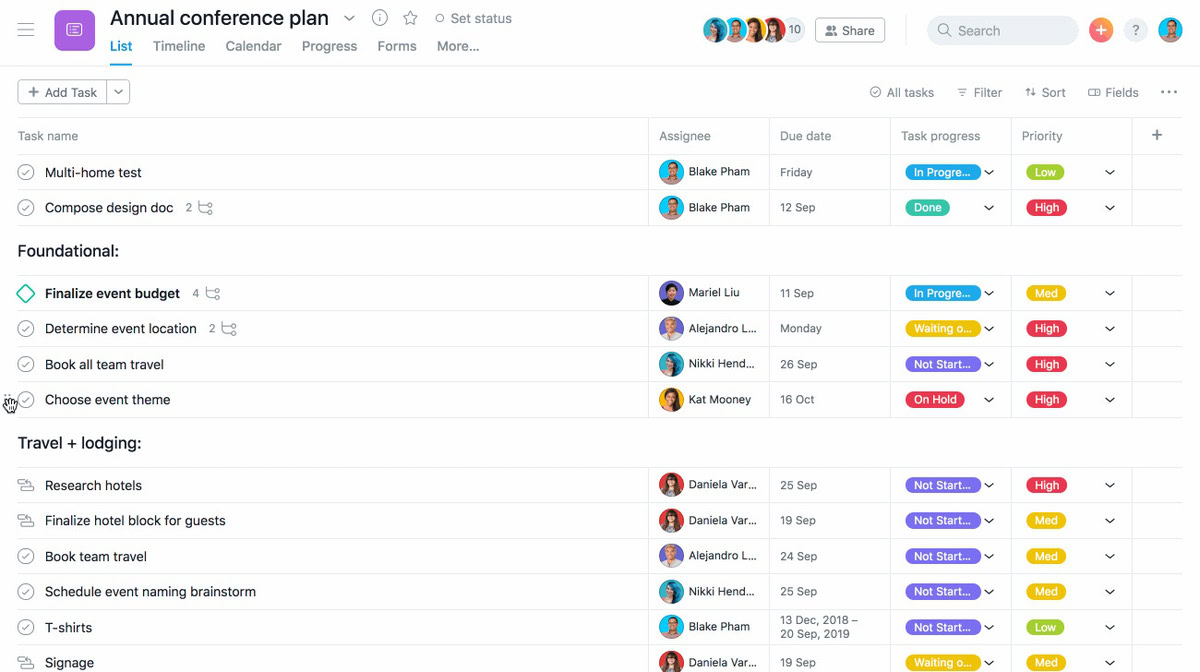
Armed with just the user interface, and backed up by either software’s extensive knowledge base, most users in your organization should have no problem in getting started. A lot of people prefer the more basic user experience that Monday offers, but this is highly subjective, so give both a try before forming an opinion.
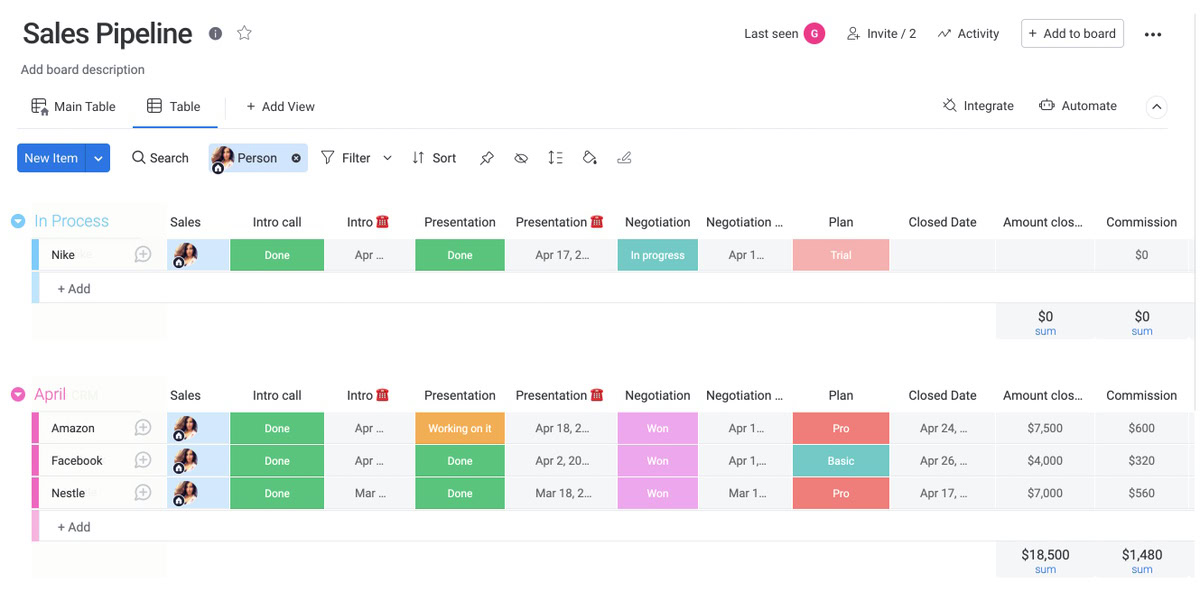
For free users and budget users, Asana feels a bit more forgiving. Teams can create their own projects, and each project can take any of the different views that are best suited for it. So if you aren’t paying for the larger Business plan, you can still access the List, Board, Timeline, and Calendar views. With Monday, you’d be stuck with just a Kanban view as a Basic user, which may not work across more complex scenarios.
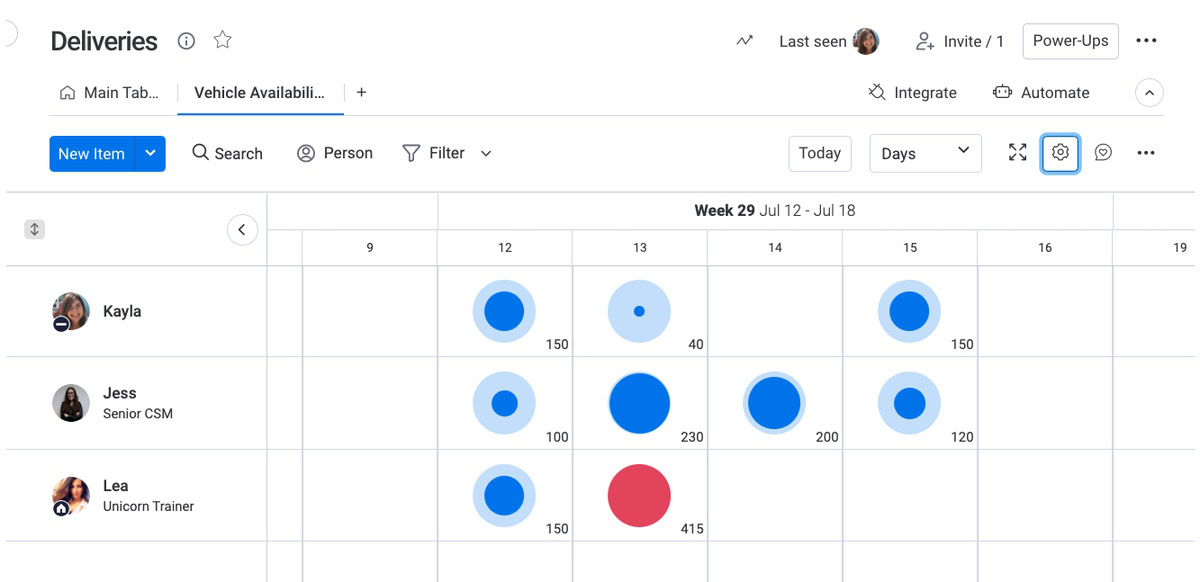
However, the Monday Pro plan comes with a unique Workload dashboard that is extremely useful in this day and age of remote working. Asana also has a Workload view in its Business plan.
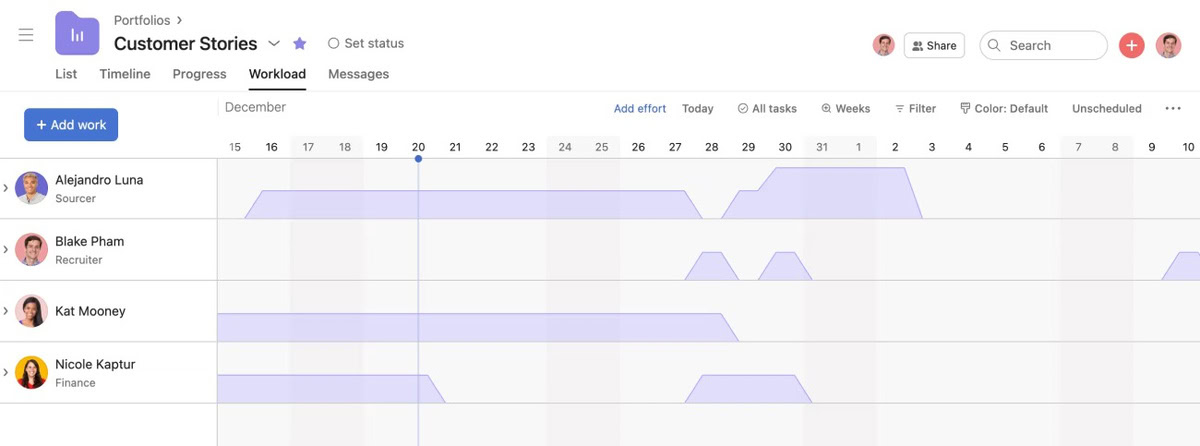
Asana’s Gantt view is called Timeline, but some users may not like it as much as the more traditional Gantt view.
Both Asana and Monday feature helpful templates that make it very easy to get started, whether your project is a content calendar, a product marketing launch, something to track IT requests, or even something to help manage your freelancer pool. There are plenty of pre-made templates that you can hit the ground running with, and then tweak and customize further to suit your own needs.
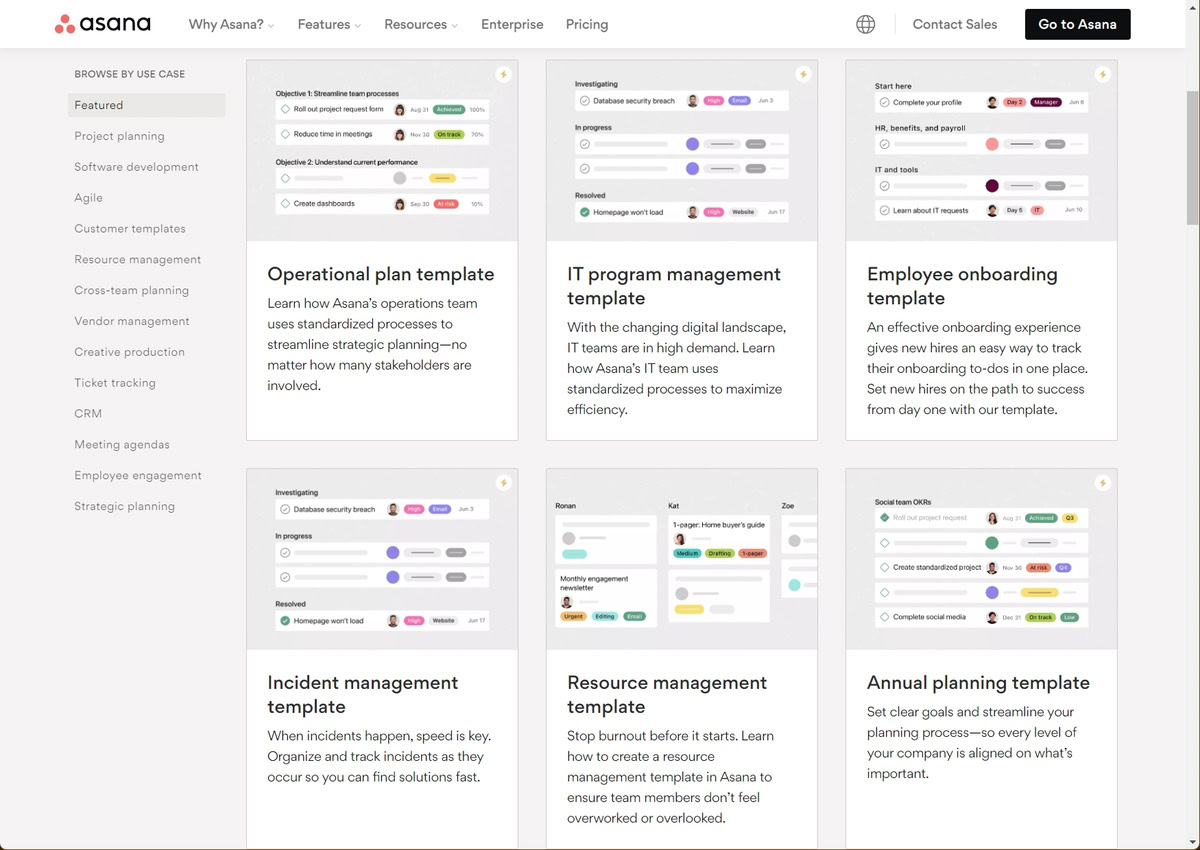
Beyond the basics, there are a fair few differences between the user interfaces of the two. However, a point-by-point comparison between them is pointlessly voluminous and moot as most teams will customize the view on the basis of their task at hand. Your decisions are likely to be affected more by the pricing of the tool for your team size and whether it serves your exact needs.
What I would like to give Monday credit for is the presence of a formula column on the Pro tier. This addition makes it very lucrative for teams that would like to bring in their Microsoft Excel-style stat reporting straight to the work management tool. This functionality is not available in Asana by default. In fact, Monday has a dedicated Column Centre for the wide variety of different column types it offers.
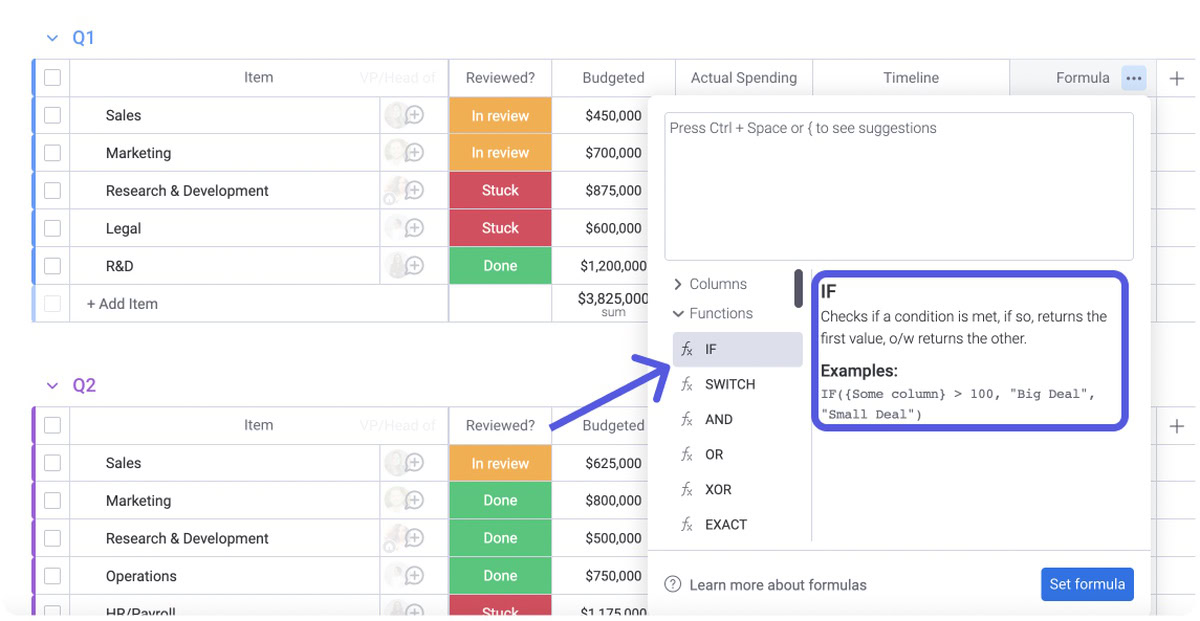
Both Monday and Asana have apps for iOS and Android that work very well. However, larger projects may get exceedingly complex to handle on mobile, and that’s a problem of the mobile form factor than of the app. So keep your expectations grounded on what your employees can feasibly do from their phones.
Automations and Integrations
Both Asana and Monday.com offer automation and integrations, but there’s a slight twist in the tale. Asana offers app integrations right from its free plans, with automations coming in the next tier.
Monday, on the other hand, uses an “action” system for integrations and automations, and only the Standard plan starts offering the same. This, too, remains capped at 250 actions per month, shared across integrations and automations, which comes out to just about 8 actions per day across your entire team. That’s very low for any real integration and automation setup, and you’d be very tempted to jump up to the Pro plan for the sweeter 25,000 actions per month.
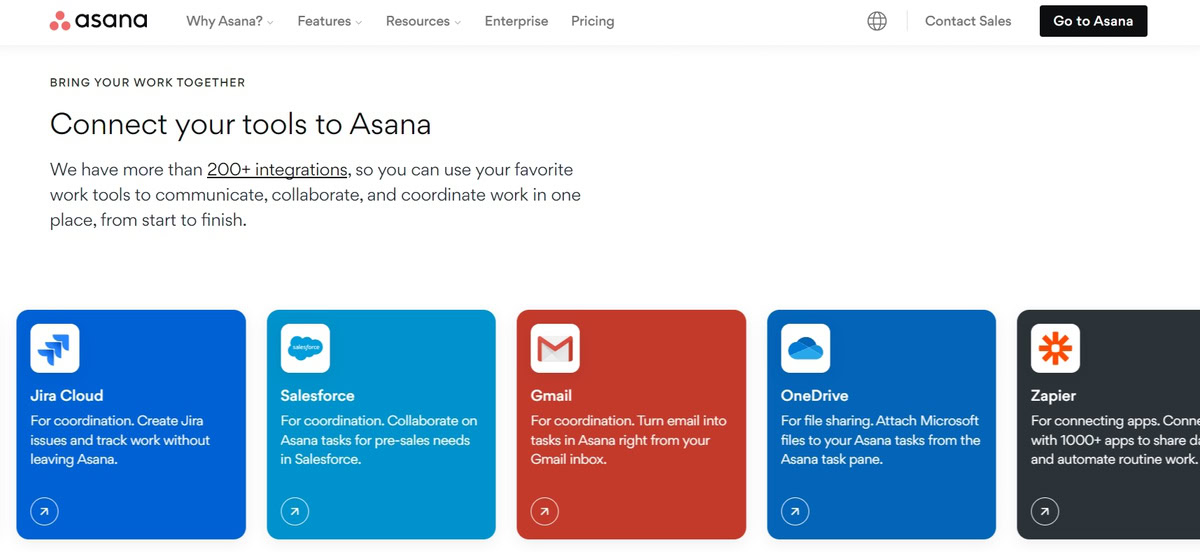
Presuming you are on the right plan for your needs, you’d enjoy automations and integrations on both services. Both services integrate with popular apps like Outlook, Microsoft Teams, Dropbox, Slack, Zoom, Google Calendar, Google Drive, Excel, Gmail, LinkedIn, OneDrive, Zapier, Figma, Loom, and much more. There is an extensive library for you to explore on both services. We do recommend looking up the integration of the specific service that you use and figuring out if it exists on the platforms.

With regards to automation, both services offer automation. Monday makes it exceedingly simple to create automations, while Asana is also very capable but not as beginner-friendly. With the presence of automation templates on both platforms, you’d be really at ease creating any automation that you need. As mentioned, though, Monday’s action system is very limiting unless you go to Pro or Enterprise.
Asana or Monday.com: Which project management service is right for you?
If you’ve been following along, you’d notice that both Asana and Monday.com overlap significantly in what they do and what they can achieve. But there are areas that you need to pay close attention to and see if the service aligns with your need.
For example, Asana’s Timeline view may appear complicated to your employees, who may prefer a more traditional Gantt view. However, if you are on a limited budget, then you won’t get a Timeline view on Monday unless you go for the Standard plans. So your exact needs and budget will determine what service is best suited for you.
Your exact needs and budget will determine what service is best suited for you.
However, broadly speaking, I like Monday.com for its more simplistic approach to project management, without shying away from going in deep for advanced users with things like the Column Centre and more. Asana is my preference for automation and integration, as it is offered to a wider category of users without forcing them up a plan.
If you have a smaller team or a smaller budget, Asana is more likely to work out for you. If you want a simpler yet more comprehensive solution that encompasses more functions across your business, or if you have a larger team or a larger budget, Monday.com is more likely to work out for you.
Both services offer a free trial, so we still highly recommend trying them both out before making a choice.